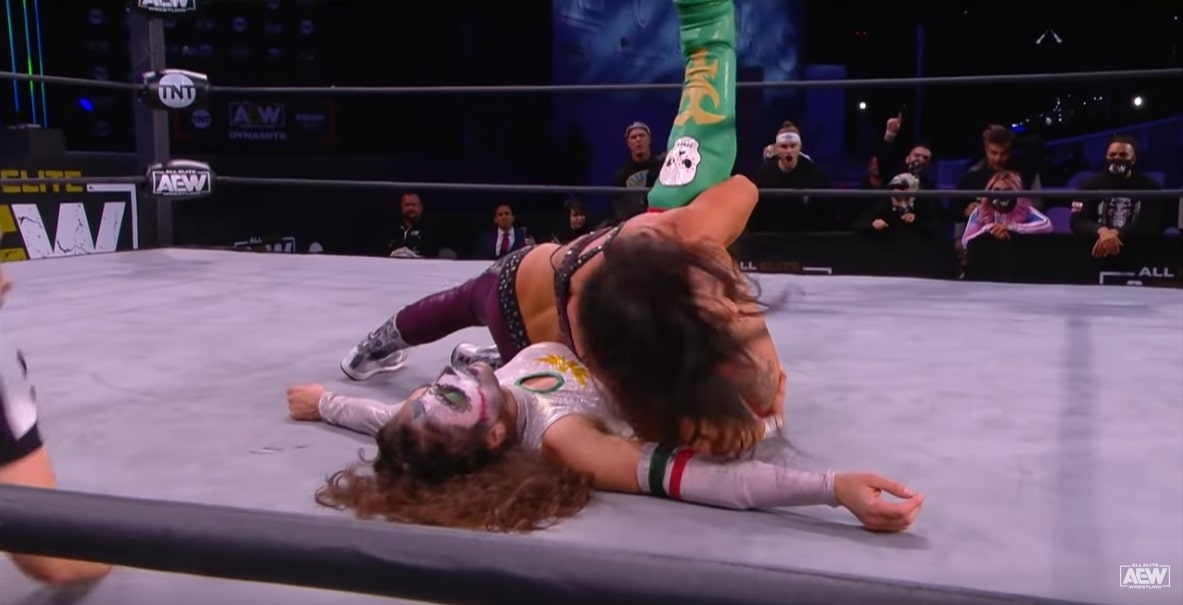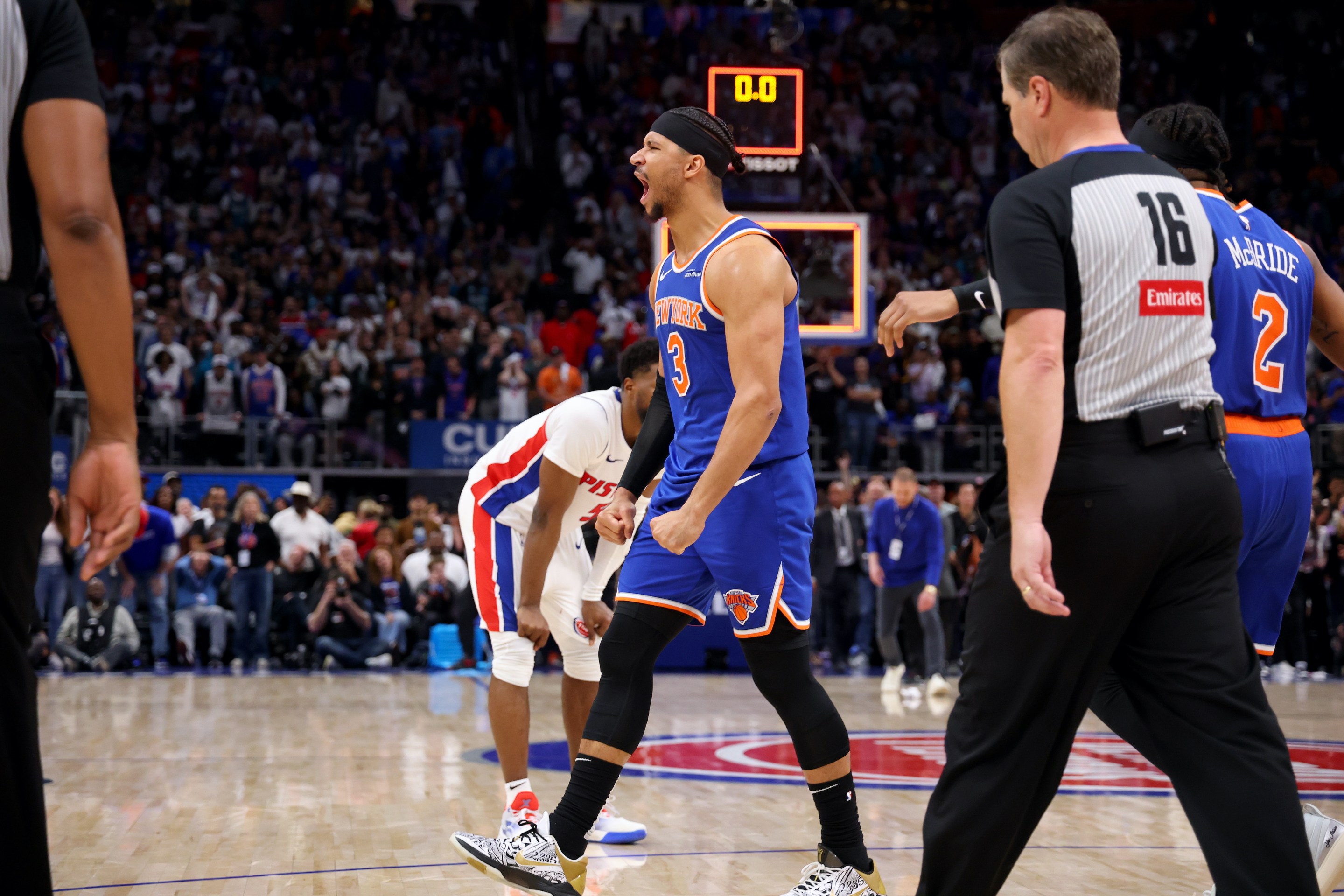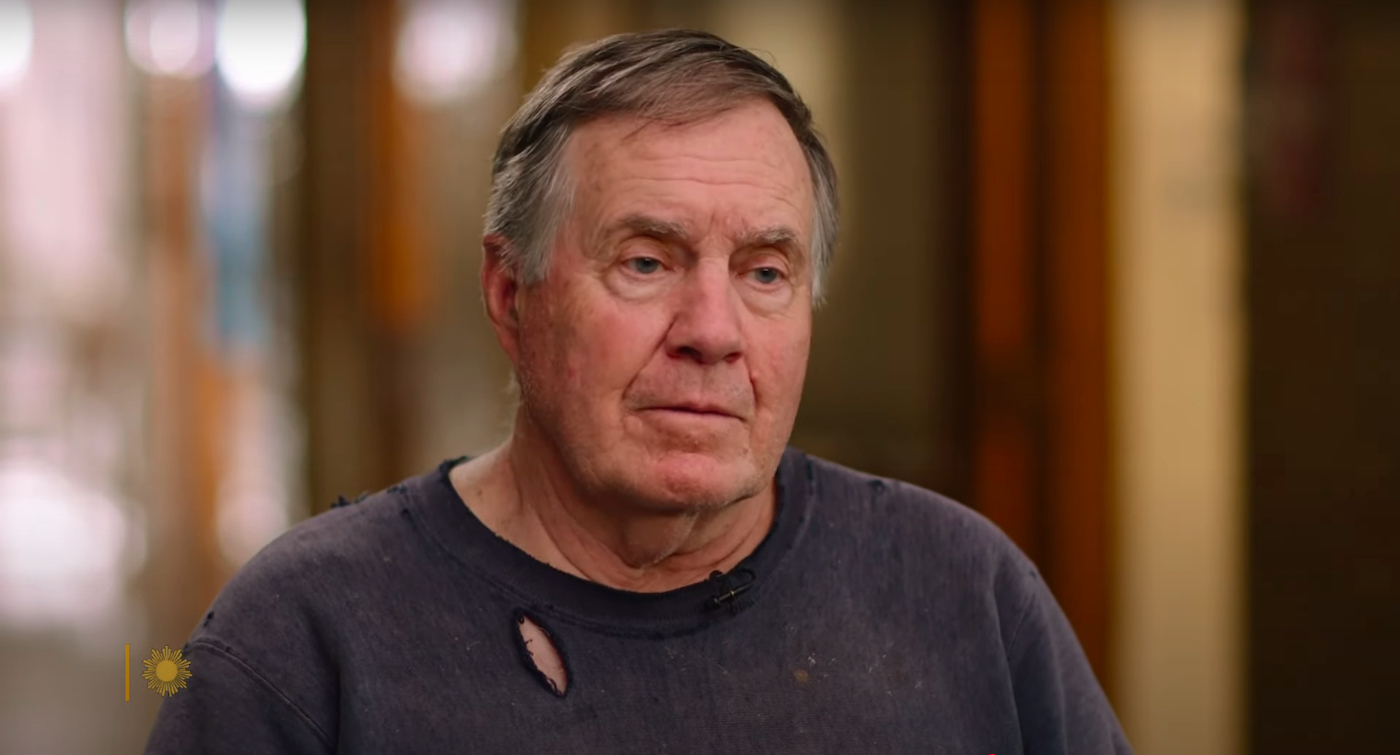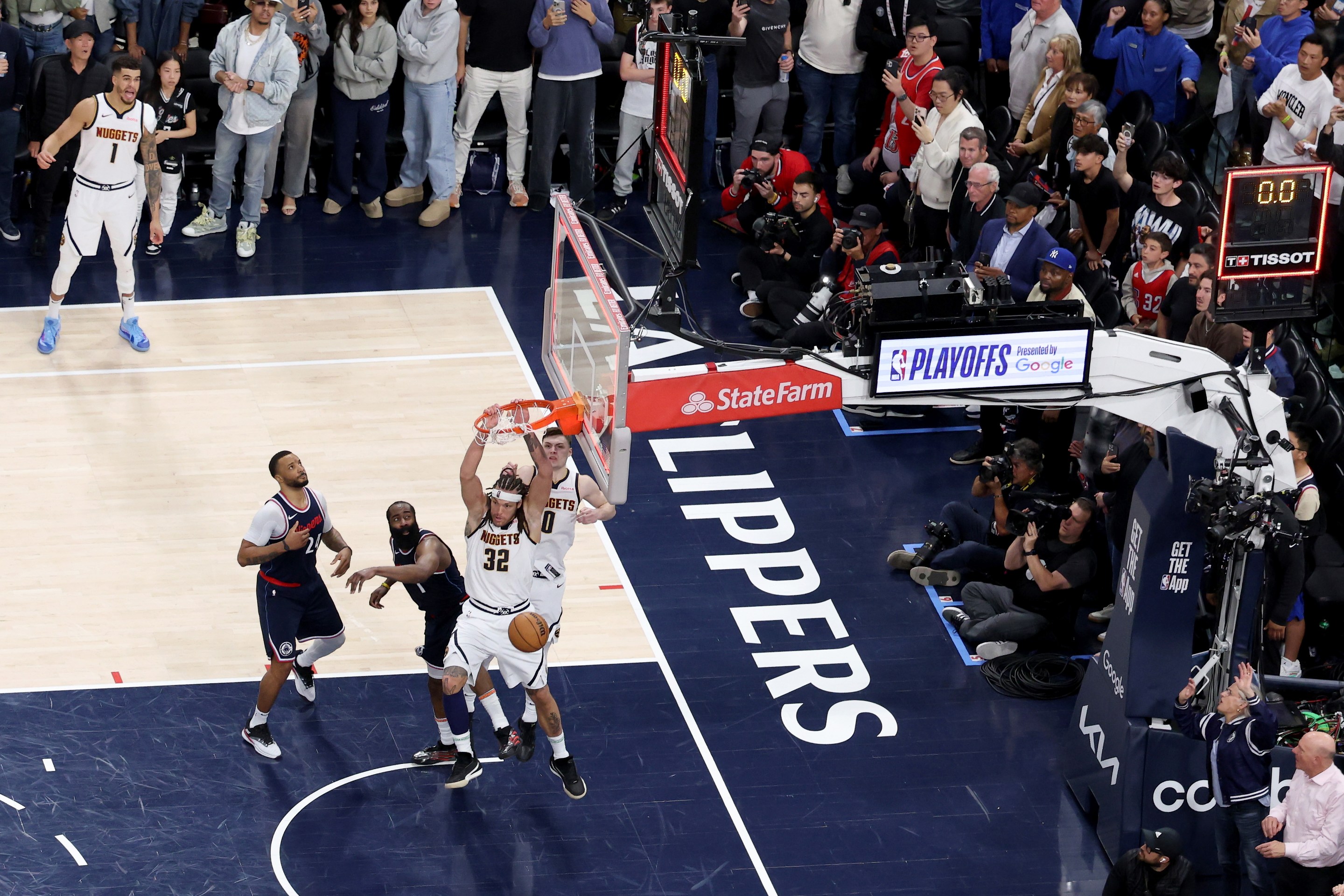Last night on All Elite Wrestling's weekly show Dynamite, at the top of the obligatory 9:15-9:30 women's match between two underdeveloped characters fighting for a championship owned by another company, announcer Tony Schiavone was shilling for AEW Heels, a $50/year club that the promotion advertises as a "community for women who love wrestling" and a "female-forward movement." (I don't really know, man.) When the ad finished and the match between Thunder Rosa and Serena Deeb was getting underway, Jim Ross made a dumb joke about Heels.
"Do they do bake sales?" cracked JR, who is firmly in the "late period Brent Musburger" phase of his legendary career.
"I, uh, I don't know," replied a flustered Schiavone.
"They actually have a talent competition coming up," third man in the booth Excalibur noted with a straight face, before the all-male trio then pivoted back to the action at hand.
I can't really tell you why this little condescending remark—one about an entire endeavor in AEW Heels that already felt condescending from its inception—was the final straw that made me tell a pal, "AEW should just drop its women's division." But every single episode of Dynamite further hammers home the fact that AEW seems not to know what to do with its women wrestlers, and not especially interested in figuring that answer out. Whether it's true or not, it sure feels like the promotion airs the barest minimum number of women's matches only because they feel like they have to, and not because there's any real internal desire for a strong division.
The misfortunes of AEW's women's division, from the promotion's very first pay-per-view in May 2019 on, have been catalogued widely and at length around the wrestling discourse, but here's a brief rundown. Awesome Kong, the promotion's most well-known initial signing on the women's side, made a fantastic surprise debut at their inaugural event but then gradually disappeared from the promotion due to the toll of injuries and the demands of her acting career. Kylie Rae, another early signing with star potential, quickly asked for her release from the company and has since retired from wrestling despite being just 28 years old. The Nightmare Collective, a nonsensical storyline centering the well-liked executive Brandi Rhodes as a cult leader, was quietly dropped in early 2020 due to a poor reaction from confused fans. Riho, the company's first women's champ, hasn't been seen on TV since the start of the pandemic because she lives in Japan. Kris Statlander, an alien who pokes people on the nose to say hello and one of my personal favorite competitors, suffered a real ACL injury in June. And Britt Baker, the division's most charismatic talker, has had her in-ring action come in fits and starts in 2020 thanks to a couple of legit injuries of her own.
That's a long list! It's easy to feel some sympathy for the company's leaders, just given the extent of the challenges they've had to confront in the midst of all their other, pandemic-related challenges. Just a year into its existence, AEW essentially had to try and rebuild the division from scratch again, which they've done by partnering with the Billy Corgan-owned National Wrestling Alliance for some talent-sharing and by installing the very skilled, very respected Hikaru Shida as a heroic champion who takes on all challengers.
But as we enter the seventh month of Shida's title reign, AEW's female wrestlers are bumping their heads on a low ceiling, and excuses about the problems they've weathered feel increasingly insufficient as the tokenization of this division becomes more and more apparent. It is just impossible to build a compelling wrestling division when you give it just one match and at most 20 minutes of TV time (including commercials, which detract from that one match even further) every week, and that unfavorable situation has been the case on every single episode of Dynamite since, if I'm not mistaken, the one on Dec. 18, 2019 when Statlander and Awesome Kong picked up wins in separate matches.
Every week on Dynamite, in that predictable "grab-a-beer" slot slightly before the main event, the women's segments are just left out there to die. The matches on TV still feel random, and the wrestlers still feel like strangers, because so little effort has been made to introduce them to viewers and little argument has been made as to why they should care about these performers' wins and losses. The duo of Diamante & Ivelisse won an irrelevant trophy called the Tag Team Cup on a Saturday night edition of Dynamite back in August, in the finals of a mostly YouTube-broadcasted tournament that seemed designed to build up the division, but they haven't been on TV since September. Another intriguing performer—Allie a.k.a. "The Bunny"—has gone through a whole "villain-to possibly redeemed ally of the heroes-back to villain" arc this autumn; that story, however, was mostly stuck on YouTube and told on TV not through her own segments but through rushed pre-match summaries delivered by the announcers, which only served as the build-up to a bloody confrontation between male wrestlers who both had feelings for her.
And the company's lone women's PPV match on the Full Gear card earlier this month, between the champ and Nyla Rose, had a story that was basically Shida appearing on TV and telling Rose, "You're winning matches, I guess that means we fight." AEW Executive Vice President Cody Rhodes defended critics of the non-existent build by arguing that fans shouldn't be conditioned to the idea that every match needs a connected story—a point that would hold weight only if it also applied to any of the men's matches on the same program, which it did not.
I don't really have any more advanced analysis than this! The women just need to be on TV more if AEW wants its fans to care about them. For as much as I like this promotion and want it to succeed, their failures when it comes to this division remains a hugely important area where they're regularly and resoundingly getting their asses handed to them by WWE, whose highest rated half-hour of pandemic programming was a recent women's title match and whose directly competitive Wednesday night show, NXT, has regular women's show-openers and main events that far surpass Dynamite's lame attempts at sneaking its female roster onto the card. (It's worth noting that WWE is doing all this without Vince's two biggest stars, Becky Lynch and Charlotte Flair, who are currently absent due to pregnancy and injury, respectively.)
No matter how much talent AEW has lost or is missing, there's still plenty to work with. Thunder Rosa has a captivating presence and is a talented in-ring worker, while Serena Deeb is impossibly athletic and one of the most experienced women in the company; the two had a really strong match together on Wednesday. That bout was complimented by some interference by the devious and usually pretty funny Britt Baker, who aside from being a great troll when there were big live crowds to rile up can also lay claim to one of the company's grittiest moments, when she actually broke her nose during an April match filmed in a mostly empty gym. Shida, who faces the promising heel Anna Jay next week, is easy to root for and easy to believe as the top female wrestler in the company. And another potentially entertaining angle is brewing between the just-debuted Jade Cargill and Brandi Rhodes, who came out from the back breathing pure fire to cuss out Cargill for mocking her real-life husband. (Though, again, their feud will likely serve as a mere backdrop for what's been teased as ... wait for it ... Cody vs. Shaq.)
Over a year's worth of television, AEW's women's division has occasionally shown that it can deliver something memorable. But since there are too many performers for the time the company allots for them each week, those bright spots failed to build on each other in organic ways. AEW's men's division has been particularly strong of late precisely because the company keeps booking matches and rivalries that feel like the natural result of big personalities butting into each other week after week in downtown Jacksonville's amphitheater. But on the women's side, audiences just haven't been given the necessary information about who these wrestlers are—or what they want, or how they plan to get it—that would tell these stories in the ways that wrestling shows need to tell them. And no matter how good the performers are, 20 minutes (including commercials) once a week won't be enough to fix this problem.






